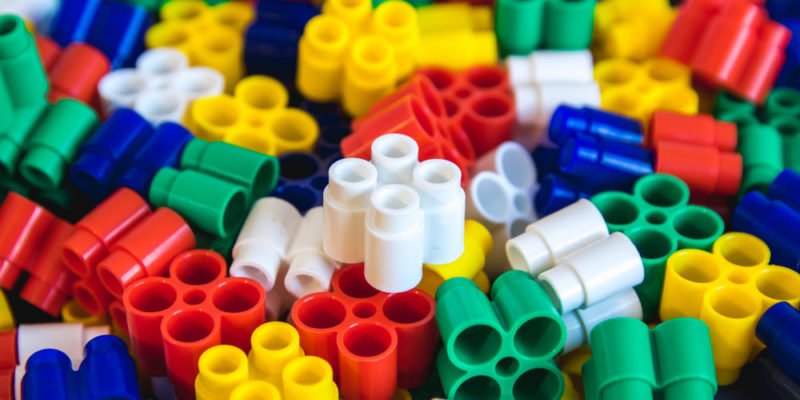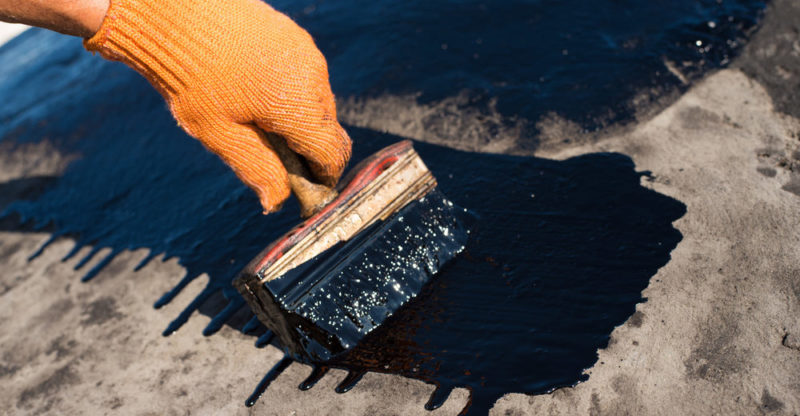We explain what the solid, liquid and gaseous states are and the properties they have. Also, its characteristics and examples.
What are the solid, liquid and gaseous states?
When we talk about states of aggregation of matter , it is about the ways in which matter can present itself , depending on the relationship between the particles that compose it. Three are generally known, also referred to as phases: the solid, liquid and gaseous state.The state of aggregation determines the different physical properties of matter . Although the substances are chemically identical, the physical differences are drastic. This can be seen, for example, in water , which can be liquid, solid (ice) or gaseous. Although in all cases the chemical composition of water remains the same (H 2 O), physically it behaves differently in each state.
There are also other less frequent states of aggregation . Among them are the plasma state or supersolids, but these forms do not occur spontaneously in nature, but in laboratories.
Solid state
 Matter in solid state presents its particles very united by attractive forces of great intensity. The particles are very close to each other and vibrate slowly.
Matter in solid state presents its particles very united by attractive forces of great intensity. The particles are very close to each other and vibrate slowly.They behave as a single body, with great cohesion , greater density than other states and a constant shape.
Solid bodies are resistant to fragmentation and are endowed with shape memory, that is, they tend to always remain the same.
Solids have little or no fluidity , because they retain their shape first and foremost. In general they cannot be compressed, since their particles are as close together as possible. When a solid is broken or fragmented, new solid objects of smaller size are obtained.
Follow in: Solid state
Types of solids and examples
 There are two types of solids, according to the way their particles are arranged:
There are two types of solids, according to the way their particles are arranged:
- Crystalline . They are made up of cells organized in a geometric way, so they usually have a regular, precise shape, based on a pattern. For example: metals , ionic compounds such as sodium chloride (NaCl) and diamond.
- Amorphous or vitreous . Because its particles do not come together in an ordered structure or a particular pattern, their shape is often irregular and varied, depending on the conditions in which they were produced. For example: glass and rubber.
The liquid state
 In the case of liquids , their particles are still held together by attractive forces, but they are much weaker and more disorderly than those of solids . For this reason, liquids do not manage to preserve a fixed or stable shape, nor do they have as much cohesion and resistance as solids.
In the case of liquids , their particles are still held together by attractive forces, but they are much weaker and more disorderly than those of solids . For this reason, liquids do not manage to preserve a fixed or stable shape, nor do they have as much cohesion and resistance as solids.Liquids obtain the shape of the container that contains them, although their particles do not necessarily disperse until they occupy their entire volume, as occurs in a gas. On the other hand, they have a great fluidity, in fact, they can be inserted and extracted through small spaces. Their surface tension makes them adhere to objects, and this is the reason why water gets wet.
Liquids are not very compressible and have their own volume . Also, with the exception of water, they tend to contract when cooled.
Types of liquids and examples
 Liquids are fluids, so they can be classified according to their fidelity to the physical principles described by Isaac Newton in his studies on viscosity. They may be:
Liquids are fluids, so they can be classified according to their fidelity to the physical principles described by Isaac Newton in his studies on viscosity. They may be:
- Newtonian fluids . They comply with Newton's expectations, keeping their viscosity constant. These are the simplest fluids to describe, the denser they are, the slower they flow. For example: water, kerosene, gasoline and alcohol.
- Non-Newtonian fluids . It is a special type of fluid that does not comply with Newton's equations, since their viscosity or opposition to flow varies with the variation of temperature , so they have only an apparent viscosity. These fluids are almost always obtained artificially. For example: tar, lava, blood and yogurt.
The gaseous state
 The gas particles are in such a chaotic state of dispersion and distance that they hold together with difficulty. The force of attraction between them is very weak, so gases occupy a much larger volume than liquids and solids.
The gas particles are in such a chaotic state of dispersion and distance that they hold together with difficulty. The force of attraction between them is very weak, so gases occupy a much larger volume than liquids and solids.Substances in the gaseous state tend to expand until they occupy the entire space that contains them. Gases also lack a fixed shape and also a fixed volume and respond very little to gravity .
More in: Gaseous state
Gas types and examples
 Gases are usually classified according to their chemical properties, which can be very diverse, for example:
Gases are usually classified according to their chemical properties, which can be very diverse, for example:
- Inert gases . They are gases endowed with very little chemical reactivity, like noble gases .
- Flammable gases . They are easily combustion gases in the presence of oxygen and heat, which is why they produce explosive and exothermic reactions.
- Corrosive gases . They are gases that have an innate capacity to generate corrosion, that is, whose pH is so acidic or so basic that they damage surfaces by contact.
Some simple examples of gases are: air , methane (CH 4 ), carbon dioxide (CO 2 ), ozone (O 3 ), and helium (He).
Phase changes to solid
Phase changes are the physical processes that convert matter from one state to another, without generally altering its chemical properties. The following are what convert matter from a liquid or gas to a solid:
- Solidification . It is the process by which, by increasing the pressure of a liquid, it turns it into a solid. During this process, the particles of the liquid get closer, which causes interactions to be established between them that generate firmer structures typical of a solid.
- Freezing . It consists of the transformation of a liquid into a solid by cooling the liquid. This is what happens when water freezes.
- Deposition . It is the process that consists of withdrawing heat energy from a gas, which can cause, under certain pressure conditions, its particles to clump together and lose their enormous speed, and turn into solid crystals without first passing through the liquid state. It is also known as Reverse Sublimation and usually occurs at the top of the mountains , always covered with ice.
Phase changes to liquid

The phase change processes that lead to the change from solid or gas to liquid are:
- Merger . It is the process by which the temperature of a solid is increased until it becomes a liquid. Heat energy is supplied to solid matter until its temperature reaches its melting point, which causes its particles to gain movement and speed, until it melts, flows and becomes liquid. This is what is done in metallurgy with iron , which is heated until it melts.
- Liquefaction . It occurs when a gas is subjected to very high pressures, forcing it to transform into a liquid, without changing its temperature. This is how you get liquefied gases, such as liquid butane and methane.
- Condensing . Again, removing heat (cooling) a gas causes its particles to move more slowly. In this way, interactions are established between its particles, and drops of liquid are formed on any surface. This is what happens with water vapor on the mirror when we shower.
Phase changes to gaseous
Finally, the phase changes that lead to the gaseous state are:
- Boil . It is produced by introducing heat energy to a liquid, so that its temperature increases beyond its boiling point: its particles begin to vibrate much faster and the space between them enlarges, and liquid matter is transformed into a gas. We can check this by boiling water in the kitchen.
- Evaporation . It is the process by which a liquid turns into a gas when the temperature of the liquid increases and occurs slowly. It is not necessary for the temperature of the liquid to reach the boiling point for it to begin to transform into a gas.
- Sublimation . Under certain conditions of pressure and temperature, it is possible to quickly mobilize the particles of a solid, so that it becomes a gas directly, without first passing through the liquid state. This occurs with dry ice (CO2 ice) at room temperature.
Plasma state

A fourth state of aggregation of matter , which consists of an ionized gas, is known as plasma . Electrons have been removed from the atoms of these gases and therefore have a fixed electrical charge (- anions and + cations). For this reason plasma is an excellent transmitter of electricity .
There are two types of plasma:
- Cold plasma . Electrons are at a higher temperature than ions.
- Hot plasma . Its ionized atoms become extremely hot, thus generating light and heat.
The above content published at Collaborative Research Group is for informational and educational purposes only and has been developed by referring reliable sources and recommendations from technology experts. We do not have any contact with official entities nor do we intend to replace the information that they emit.
MA student of the TransAtlantic Masters program at UNC-Chapel Hill. Political Science with a focus on European Studies. Expressed ideas are open to revision. He not only covers Technical articles but also has skills in the fields of SEO, graphics, web development and coding. .
Leave a reply
Your email address will not be published. Required fields are marked *Recent post

Sport: What Is It, Types, Risks, Features, Characteristics and Examples

Dogs: Emergence, Features, Characteristics, Feeding and Breeds

Story: Definition, Elements, Structure, Features and Characteristics

